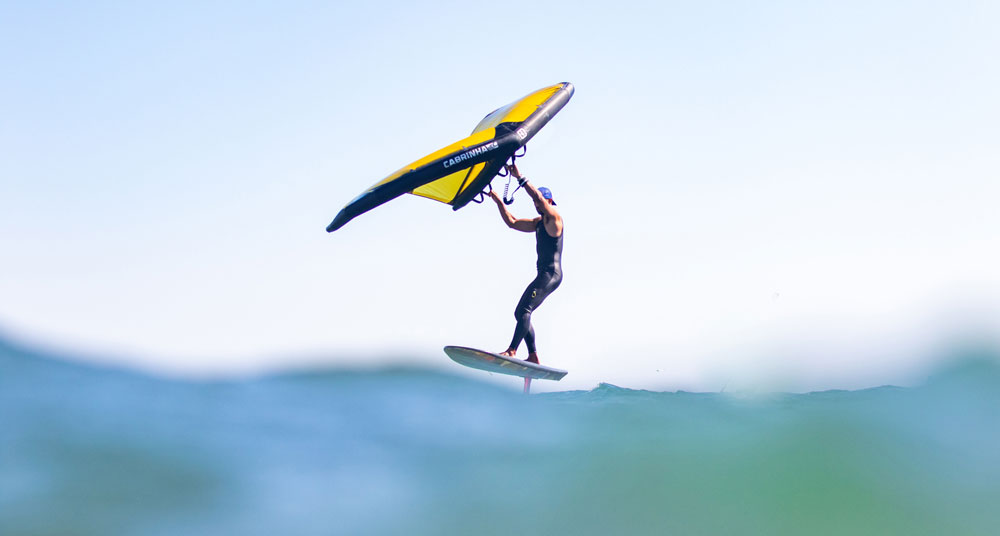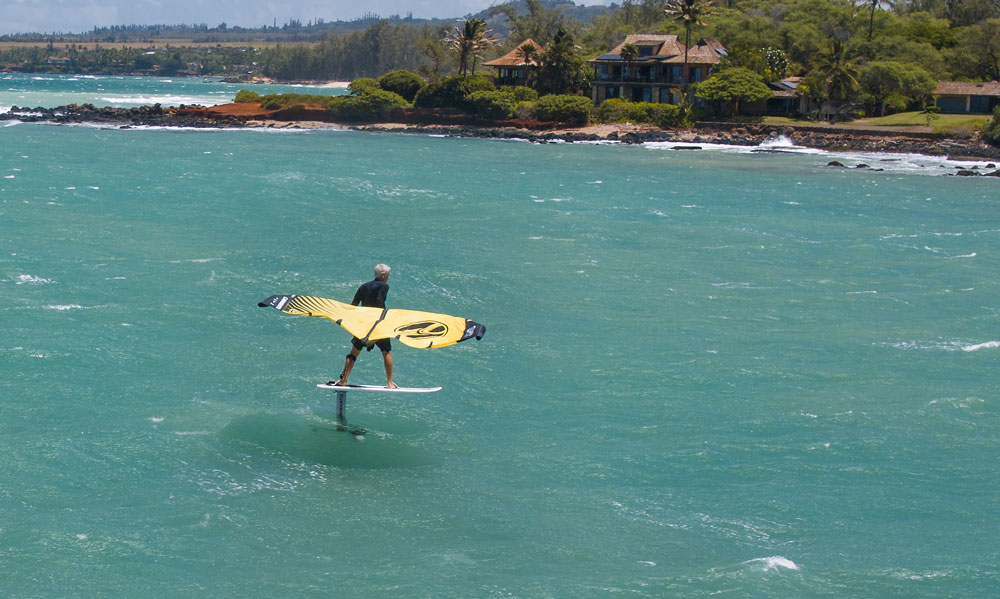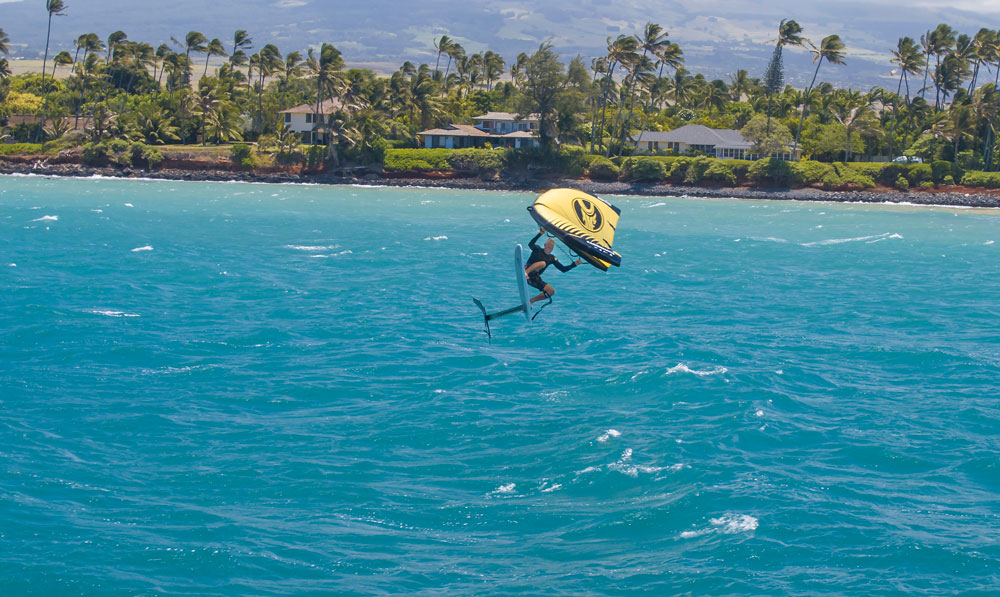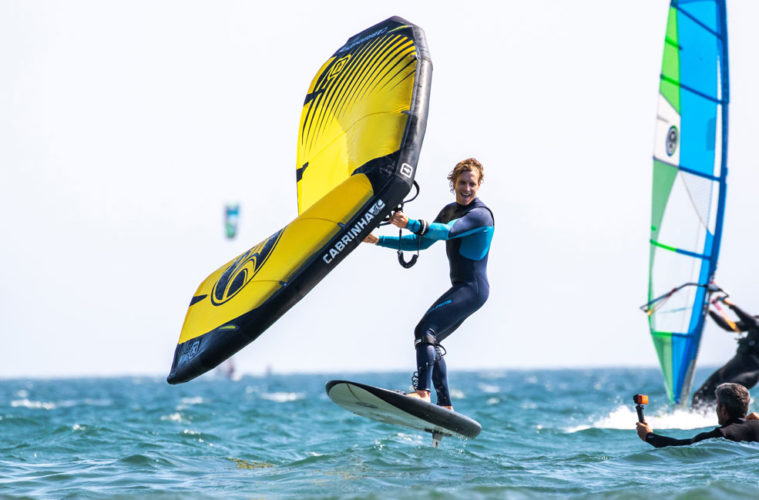The all-new Crosswing is the simplest form of wind driven power you can hold in your own two hands. In this FAQ sheet, the guys at Cabrinha aim to clarify a few questions you might have about this new tool.
Q: What is the Crosswing?
The Crosswing is a versatile wind powered ”˜tool’. It’s yet another way to power yourself across the water or land using a simple and safe wing.
Q: Is the Crosswing meant to replace a kite or a sail?
No. The Crosswing provides an experience that is unique and very different from Kitesurï¬ng or windsurï¬ng. It has many unique features that beneï¬t certain conditions, situations and locations. You can add a Crosswing to your existing kite or windsurf quiver to broaden your fun on the water. Or, the Crosswing can be your exclusive wind powered tool of choice. Its up to you to decide.
Q: Who is this wing for?
The Crosswing is literally for anyone. It has a performance level high enough to satisfy expert riders and the safety to entice ï¬rst time wing surfers.
Q: Where can I use the Crosswing?
The Crosswing can be used on any body of water or land regardless of size. Oceans, lakes, ponds, and reservoirs are all fair game.
 Q: Does the Crosswing have similar restrictions to kitesurï¬ng in terms of access?
Q: Does the Crosswing have similar restrictions to kitesurï¬ng in terms of access?
Because the Crosswing does not have flying lines like a kite, it is not subject to the same restrictions that kitesurï¬ng is sometimes subject to. This means that you can fly the Crosswing near airports and areas which are normally designated as windsurï¬ng zones (local rules apply).
Q: How much space is required to launch a Crosswing?
The Crosswing’s lack of flying lines means you can launch it in places where you would not normally launch a kite. The Crosswing can be launched directly from docks, boats, and from narrow shorelines (think beaches and lakes with trees close to the water). The unique design and natural function of the Crosswing itself poses virtually no danger to other beach goers. With proper precautions it can be set up and packed down in the presence of other beach goers.Q: Is the Crosswind difficult to set up?
The Crosswing’s simplicity is one of its greatest features. It literally sets up in under a minute which includes the approximate 20 seconds it takes to inflate. Every part required to operate it is already connected to the wing.
Q: How much air pressure should I put in the main inflated structure?
You want the wing to be ï¬rmly inflated in order to operate properly. Too little inflation and the air frame will not be supported. A good pressure is between 7 and 8 PSI.

Q: How do I transport the Crosswing?
The Crosswing is a fully inflatable wing. This means that when it’s deflated it can pack down into an incredibly small sized carrying bag. The entire deflated package is possible to ï¬t in a small back pack or even a piece of carry on luggage.
Q: What type of board can I use with the Crosswing?
You can use the Crosswing with virtually any type of board that supports the conditions you’ll be using it in. Whether it be on water or land the Crosswing acts as a power source to drive your preferred board.
Foilboard
The Crosswing pairs very well with a foilboard. The efficiency of a foil board means that you can use a relatively small Crosswing with the board. Once up on the foil you will need very little power from the wing to fly. The size of the foil board should be in relation to your body weight. It’s easiest to use a board that sufficiently floats your weight and is stable enough to stand on. For the more experienced, you can use a small foil surfboard that requires waterstarting. This will also require sufficient wind but the increase in maneuverability is incredible.
SUP
A Crosswing can be used with any of the thousands of SUPs that are in circulation today. Whether it be light wind on a lake or strong wind on the ocean, the Crosswing pairs very well with SUPing.
Q: Is the Crosswing safe?
Let’s put it this way. In terms of the lightweight inflatable structure and the Crosswing’s intuitive function”¦ it’s incredibly safe. The power control is incredibly easy and if you completely let go of the wing when connected to the supplied wrist leash it will depower immediately with virtually no residual pull. The wing itself poses little to no risk to the rider or others around them.
 Q: How would you compare the Crosswing and a foil board to a windsurf foil board (windsurfer with foil)?
Q: How would you compare the Crosswing and a foil board to a windsurf foil board (windsurfer with foil)?
For starters, the Crosswing is lighter, less expensive, more compact, has better transportability and is safer than a windsurfer with a foil. The Crosswing’s structure is 100% inflatable and fully integrated. Unlike a windsurfer which requires separate and expensive sails, booms, masts, and universals. Secondly, the Crosswing can be ridden on mid sized SUP boards as well as very small surf foil boards. If you are into free riding with a foil the Crosswing is a less expensive viable alternative with many unique beneï¬ts.
Q: How would you compare wingsurï¬ng and wingboarding to kitesurï¬ng/kiteboarding?
Wingsurï¬ng and Wingboarding is very different to kitesurï¬ng. The inflatable wing and the inflatable kite share many of the same materials and construction methods but the experience is not the same. Wingsurï¬ng provides a more tactile connection to the power source. You physically hang from and control the wing itself with your bare hands. You can operate a Crosswing in much smaller spaces than you would normally operate a kite. This is very evident especially when launching and landing. For example: you can literally set up and step out of a small dingy with a Crosswing.
Q: What about big air? Can a Crosswing get the same hang time as a kite?
This is where these two sports differ. In terms of airtime wingsurï¬ng does not come close to the airs being performed with a kite or windsurf. It’s also not recommended to jump off of any hills or structures with a Crosswing in case you had any ideas.
 Q: Can you use the Crosswing in the surf?
Q: Can you use the Crosswing in the surf?
Absolutely. The Crosswing has a few interesting features that come into play while in the surf. In one example: When surï¬ng upwind you can hold the wing in a luffing position and surf directly into the wind on your own power. When you want to drive back down the line just power up the wing and turn off the wind.
Q: Can the wing be used for downwinders?
Downwinders are one of the Crosswing’s specialties. You can do downwind runs on any board that suits your body weight and style of riding. This includes foil boards or any traditional SUPs.
Q: Does the Crosswing go upwind?
Yes. Especially when riding up on a foil the Crosswing literally flies upwind.
Q: Do I need a harness with the Crosswing?
No harness is required for use with the Crosswing.
This article first appeared on the Cabrinha website here: https://www.cabrinhakites.com/blogs/news/crosswing-faq


